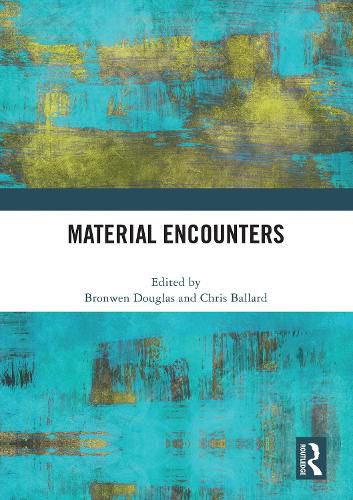Readings Newsletter
Become a Readings Member to make your shopping experience even easier.
Sign in or sign up for free!
You’re not far away from qualifying for FREE standard shipping within Australia
You’ve qualified for FREE standard shipping within Australia
The cart is loading…






This topical and conceptually innovative book proposes new perspectives on the theme of materiality which, since the 1980s, has animated work across and within disciplines in the Humanities and Social Sciences.
The particular focus of the chapters in this volume is the materiality of knowledge produced through embodied encounters between people, places, and things in the Pacific Islands, New Guinea, Australia, and Myanmar. The authors consider how materiality mediates the ways in which knowledge is generated or acquired in encounters and becomes expressed through things and material forms of inscription - charts and maps; journals, letters, and reports; drawings; objects; human remains; legends, cartouches, captions, labels, marginalia, and notes; and published works of all kinds. The essays further address processes whereby materialized knowledge is archived, conserved, distributed, restricted, or dispersed - through serendipity, excess, loss, silence, absence, and suppression.
This book will be of great interest to upper-level students, researchers, and academics in History, Anthropology and Oceania Studies. The chapters in this book were originally published as a special issue of History and Anthropology.
$9.00 standard shipping within Australia
FREE standard shipping within Australia for orders over $100.00
Express & International shipping calculated at checkout
This topical and conceptually innovative book proposes new perspectives on the theme of materiality which, since the 1980s, has animated work across and within disciplines in the Humanities and Social Sciences.
The particular focus of the chapters in this volume is the materiality of knowledge produced through embodied encounters between people, places, and things in the Pacific Islands, New Guinea, Australia, and Myanmar. The authors consider how materiality mediates the ways in which knowledge is generated or acquired in encounters and becomes expressed through things and material forms of inscription - charts and maps; journals, letters, and reports; drawings; objects; human remains; legends, cartouches, captions, labels, marginalia, and notes; and published works of all kinds. The essays further address processes whereby materialized knowledge is archived, conserved, distributed, restricted, or dispersed - through serendipity, excess, loss, silence, absence, and suppression.
This book will be of great interest to upper-level students, researchers, and academics in History, Anthropology and Oceania Studies. The chapters in this book were originally published as a special issue of History and Anthropology.